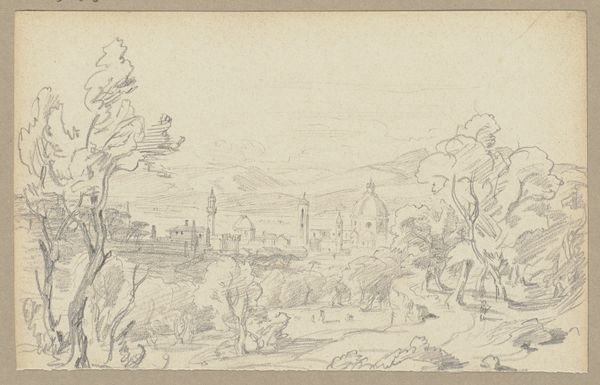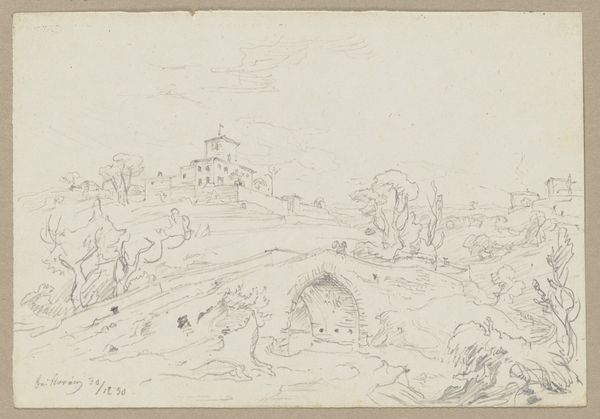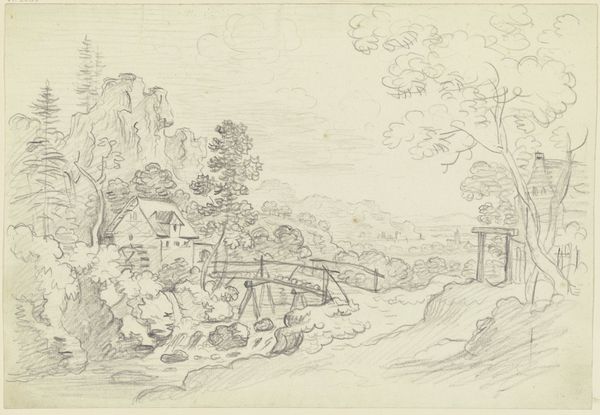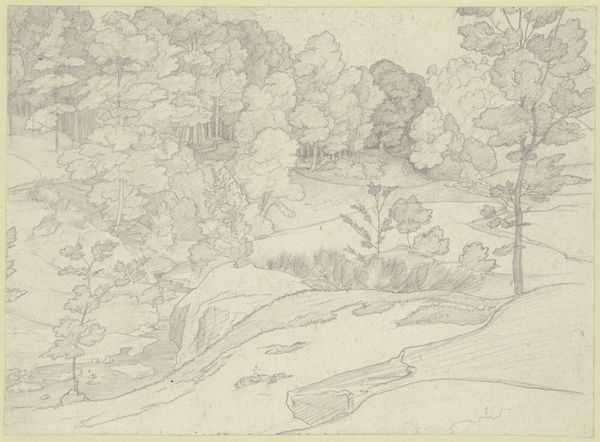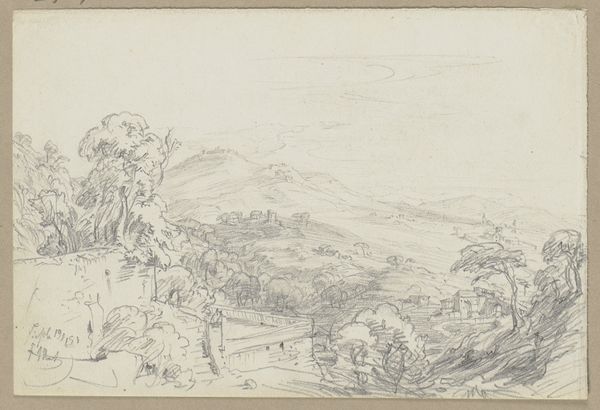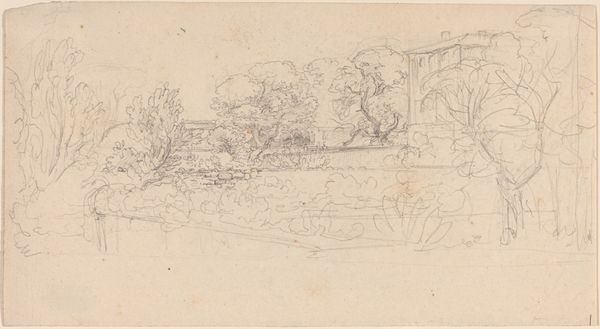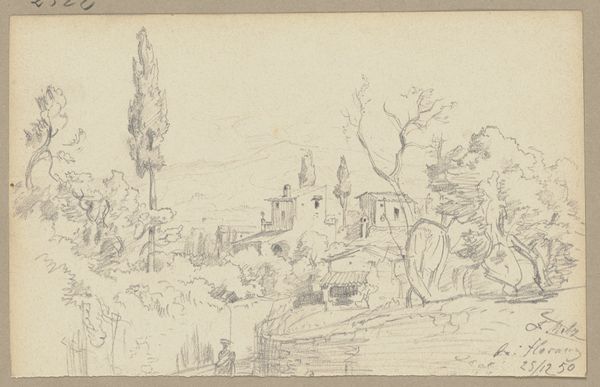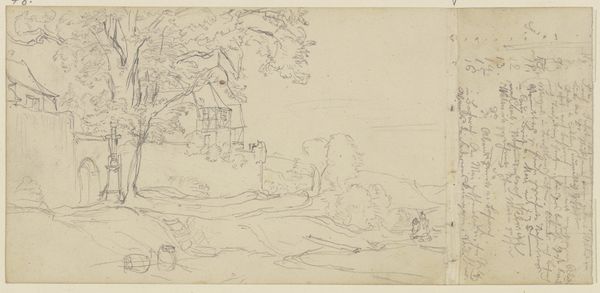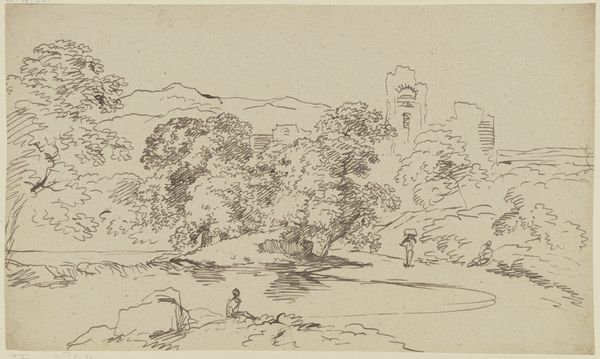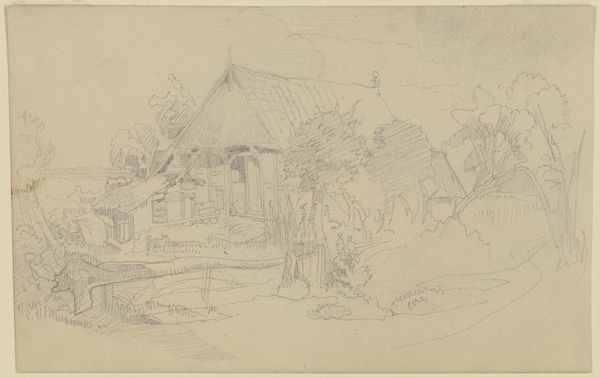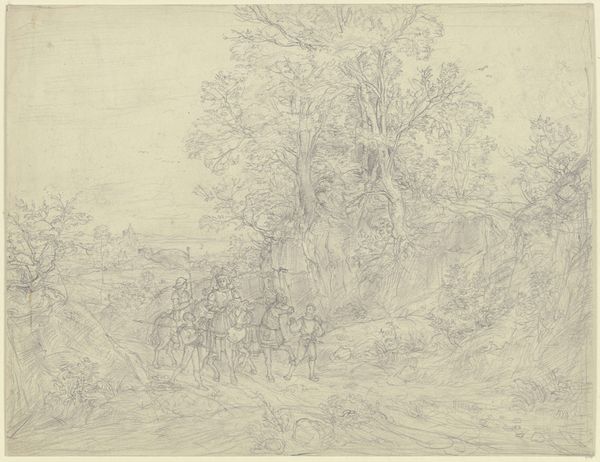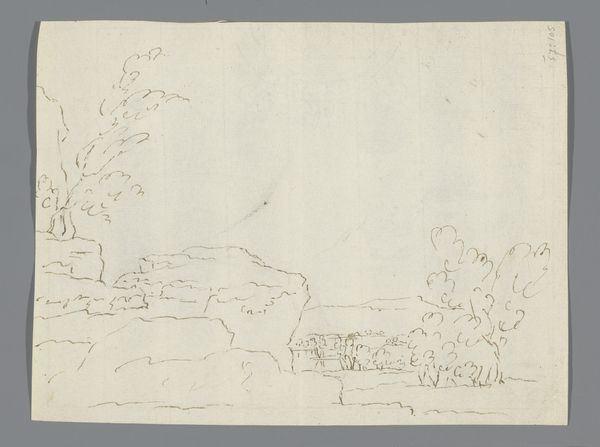
drawing, pencil, architecture
#
drawing
#
landscape
#
classical-realism
#
pencil
#
architecture
Copyright: Public Domain
Curator: This is Friedrich Metz's "Old Church in Fiesole," created around 1850. Editor: It’s delicately rendered. A kind of quiet contemplation hangs over it. Looking at the lines, you can almost feel the softness of the pencil on the paper. Curator: Absolutely. As a classical realist landscape, the drawing style seems aligned with a yearning for Italian antiquity. The church represents both spiritual permanence and the endurance of faith throughout history. Editor: Focusing on the tangible aspects of creation, you can see where Metz revised lines to get the perspective of that winding wall right. He was actively exploring the interplay of light and shadow. It is far more than just an emotional expression of a view. The paper and pencil speak to an intentional act of mark making. Curator: That act connects back to a longer chain, right? Religious structures, like the one depicted here, often function as vessels, storing collective memory over centuries. Consider its presence—not just as building, but as symbol. Editor: Fair point. We cannot detach any drawing from its context; the cost and availability of drawing materials shaped Metz's choices here, as did the art market’s demands for this type of scene among landscape buyers in the mid 19th century. Curator: Ultimately, the image serves to mediate a very particular spiritual feeling about this space— it embodies something larger, deeper in Italian collective memory. Editor: And that’s tied to specific decisions about tools and labor—how Metz composed and then traded in the art market for income. Thanks to both these aspects, Metz’s drawing resonates profoundly with historical and aesthetic insight.
Comments
No comments
Be the first to comment and join the conversation on the ultimate creative platform.
